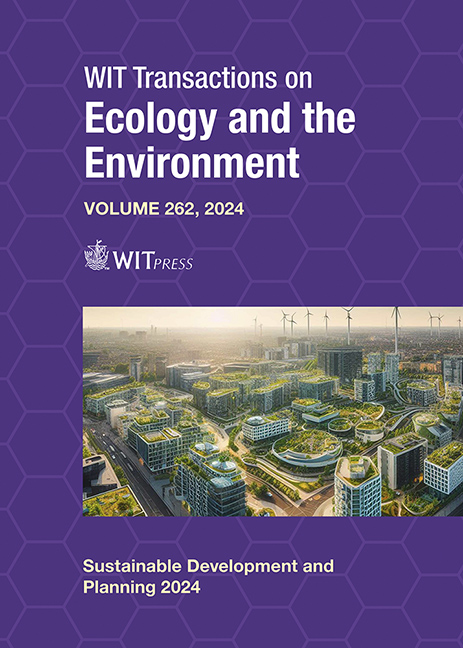DECISION-MAKING TOOLS FOR SUSTAINABLE RECOVERY OF RURAL VILLAGES: PLANNING POLICIES AND IMPLEMENTATION STRATEGIES FOR VALORISING SMALL COMMUNITIES IN INNER AREAS UNDER THE NEXT GENERATION EU PROGRAMME
Price
Free (open access)
Transaction
Volume
262
Pages
16
Page Range
479 - 494
Published
2024
Paper DOI
10.2495/SDP240401
Copyright
Author(s)
STEFANO BIGIOTTI, CARLO COSTANTINO, ALVARO MARUCCI
Abstract
The array of funding opportunities provided by the Next Generation EU programme has enabled numerous mountainous regions to initiate urban-scale recovery practices, including for Italian villages. These initiatives follow systemic and multilevel approaches aimed at ensuring sustainable development. Through a meticulous comparison of the practices approved by the competent Ministry (MiBACT) under the public notice, it was possible to deduce some general guidelines describing policies and strategies already oriented towards urban and landscape recovery. These practices encompass a holistic vision, which includes the renovation of historical and architectural heritage, the enhancement of water resources, the digitisation of primary services, and the valorisation of real estate assets and rural landscapes. These actions are implemented through mixed public–private partnership forms, which in the research have been isolated and traced back to a single matrix expression, based on the economic pre-eminence of the contracted investments. The research objective is indeed to discretise these policies into a synoptic framework of possible actions, in order to identify a useful tool in assisting administrations in decision-making and planning processes for the recovery of minor urban contexts. The case study analysed is provided by the practices directly experimented by the municipalities of Grotte di Castro, Latera, Proceno, San Lorenzo Nuovo and Valentano: local authorities originally characterised by progressive depopulation and predominantly agricultural economies, located north of Rome, Italy, and pre-identified by the Italian government within a single inner area, all benefitting from the same ministerial funding. The strategies adopted here in the implementation of the European programme have favoured the transformation of economic indicators in relation to the achievement of the expected milestones from the investment schedule, to the point of delineating unprecedented forms of governance and policies for the sustainable conversion of small historic towns.
Keywords
rural development, inner areas, rural village, sustainable tourism, sustainability, Next Generation EU programme, Bando Borghi, decision making, local scale, circle of sustainability





